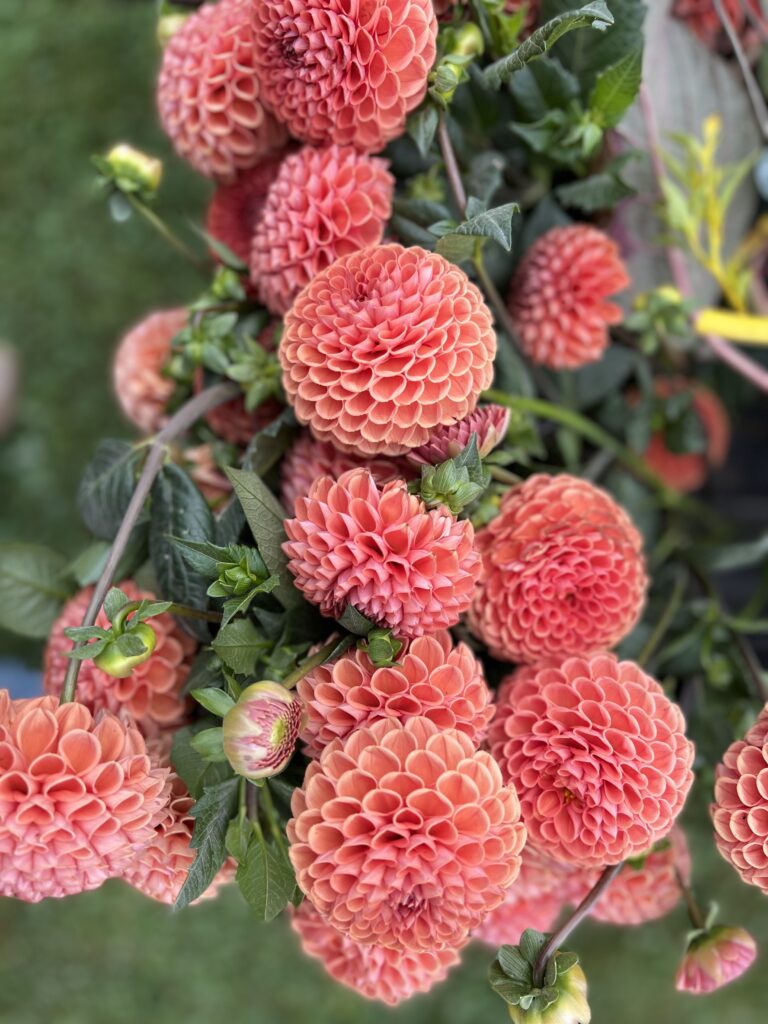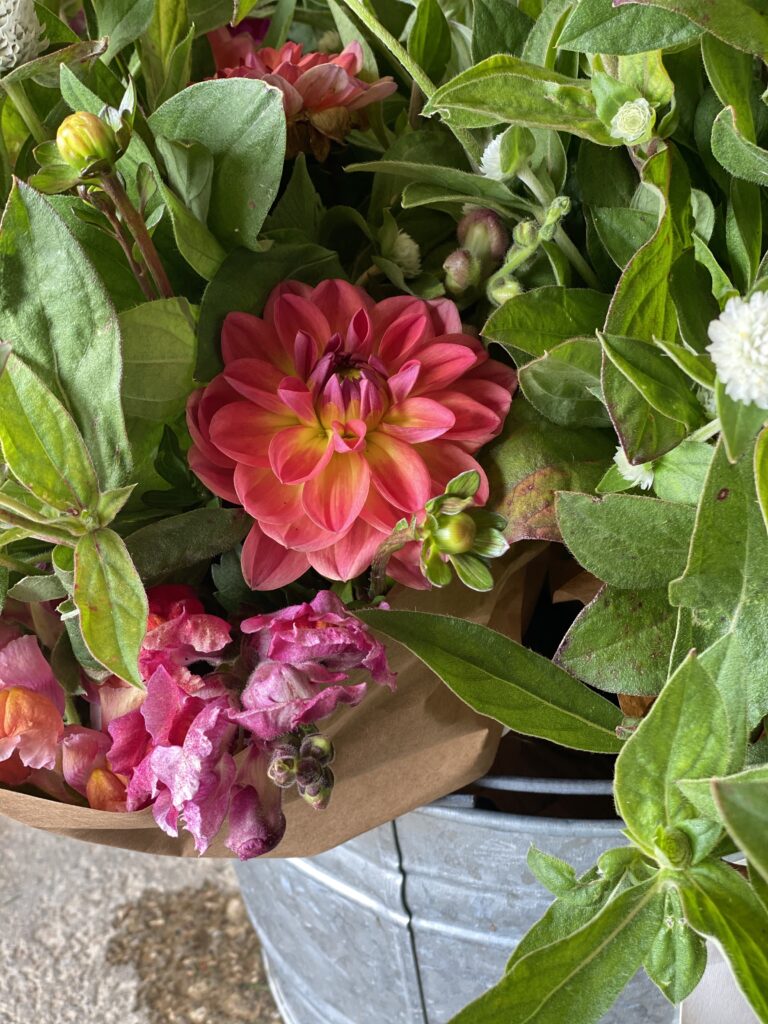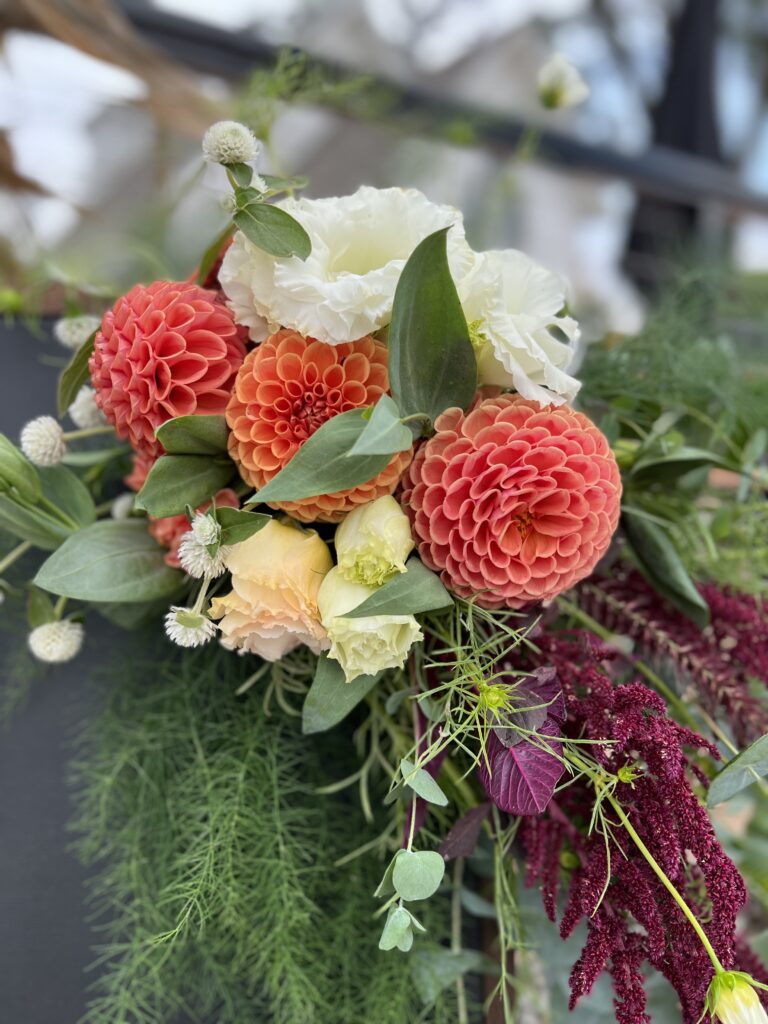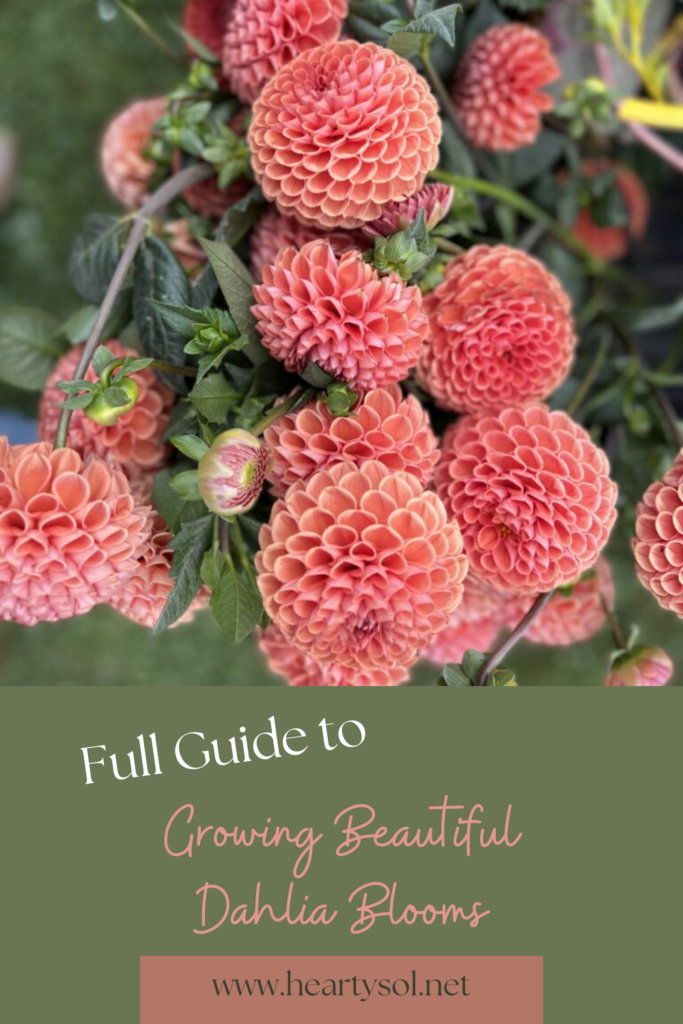How to Grow a Garden of Dahlias: A Guide to Abundant Dahlia Blooms
If you’re a Dahlia lover, there’s nothing quite like having a garden filled with an abundance of these breathtaking blooms! Here is our guide to growing Dahlias!

Beautiful Blooms
Dahlia flowers are easily one of the most eye catching flowers. There are many dahlia varieties, but they are best known for their unique globe or pom-pom shape and gorgeous variety of colors. These unique flowers originated in South/Central America and are deemed the national flower of Mexico. They are said to represent devotion, elegance, and dignity. With all there is to love about dahlias why not enjoy the abundance of a full garden of them?
Before you jump into planting these into your summer garden, growing dahlias requires proper planning, care, and attention. In this guide, we will explore the key steps and techniques to help you cultivate an impressive display of dahlias in your garden.
These Dahlias and other cut flowers we grow here on our farm make for some gorgeous bouquets! Check them out in our Flower Share and Wedding Flowers 🙂

Why You’ll Love having Dahlias in your Garden!
- Dahlias make a great addition to any bouquet or flower arrangement because of their vast variety of color! Not only can you find Dahlias in your choice flower color (except for blue), but you will find a range of different shades of that color as well!
- Dahlias can stay in bloom until the first fall frost – much later than most other flowers!
- Dahlias have been awarded by the Royal Horticulture Society numerous times and have been deemed as “particularly garden worthy”

7 need-to-know Dahlia Growing Tips
1. Selecting a Variety of Dahlias
First things first: selecting your Dahlias! To achieve an array of dahlia blooms, choose a diverse range of varieties and looks with different colors, shapes, and sizes to create an eye-catching garden. Thankfully, with this type of flower, finding variety in size and color is not an issue! These flowers have no end to their beautiful shades and different sizes. The only color that dahlias do not present is blue – besides this, you can find them in pretty much any hue. As far as their size, most garden dahlias grow to 3 or 4 feet tall – give or take. The actual flower heads can range from 2 to 10 inches wide.
There are many different types of dahlias, including: Cactus, Semi Cactus, Decorative, Pompon/Ball, Collarette, and Single Dahlias. Consider the growing requirements of each variety, such as height and sunlight preferences, to ensure they can thrive in your specific garden conditions. By selecting a mix of early, mid-season, and late blooming varieties, you can extend the flowering period and enjoy these beautiful blooms throughout the season.
2. Preparing the Soil
Start by selecting a sunny spot. Dahlias are full sun flowers so make sure to find a spot in your garden that receives plenty of sun – at least six to eight hours of direct sunlight per day. Dahlias thrive in well-draining soil enriched with organic matter. To achieve this well-drained soil, remove any weeds or grass from the area and loosen the soil surface using a garden fork or tiller. Correspondingly, incorporate compost or aged manure into the soil to improve its fertility and structure. Aim for a loose, crumbly texture with good drainage that allows roots to penetrate easily.

3. How to Plant Dahlia Tubers
You can purchase dahlia seeds, however, dahlias are typically propagated from tubers, which are underground growth buds. Tubers, aka tuberous roots, are dahlia bulbs that the flower will grow out of. Begin by obtaining high-quality tubers from reputable nurseries, garden centers, or online suppliers. You can plan to start planting dahlia tubers after the last frost date in your region when the soil has warmed up.
Planting a Dahlia Tuber: First, dig holes approximately 6-8 inches deep and wide. Afterward, place a single tuber in each planting hole. Plant with the tubers’ eye or growing point facing up and cover them with soil, leaving about 1-2 inches of the neck exposed. Space the tubers 18-24 inches apart to allow ample room for growth.
How do you identify a tuber eyes? A tuber eye is the growth point of the plant. Each tuber will have a raised dark spot on one of the ends – this will be the eye. Each tuber will have at least one or two eyes.
When should dahlias be planted? To prevent the risk of frost (if you live in the Midwest like us!), it is a good idea to plant them in May or June (late spring). From this planting time, they will stay bloomed throughout late summer until the first frost.

4. Watering and Fertilizing
Water is crucial for the growth and development of dahlias. After planting, water the tubers thoroughly to ensure proper hydration. Throughout the growing season, maintain a regular watering schedule, aiming for about 1 inch of water per week. Avoid overwatering, as it can lead to root rot. To promote strong growth and abundant blooms, fertilize the dahlias every 2-3 weeks with a balanced fertilizer or a specialized bloom booster. Follow the instructions on the fertilizer packaging for proper application rates.
For an extra boost of fertilizer, try our Composted Rabbit Tea, which is organic fertilizer you can get from rabbit manure right in your own garden!
5. How to Provide Support to Growing Dahlias
As dahlias grow taller and develop larger blooms, providing support is essential to prevent them from bending or toppling over. Install stakes or plant supports near the tubers at the time of planting or when the plants reach a height of a few inches. Gently tie the stems to the support structure using soft ties or garden twine. As the plants grow, adjust the ties to keep them adequately supported.

6. Pinching and Disbudding Growing Dahlias
To encourage bushier growth and more flowers, consider pinching or disbudding your dahlias. Pinching involves removing the center shoot or the top set of leaves when the plant is about 12-18 inches tall. This encourages side shoots to develop, resulting in more branching and ultimately more blooms. Disbudding involves removing some flower buds to prioritize larger, showier blooms. This technique is particularly useful for exhibition dahlias.
7. Regular Maintenance and Pest Control
Regular care and maintenance are essential for healthy, productive dahlias. Monitor your dahlia bloom for pests such as aphids, slugs, or snails, and take appropriate measures to control them, whether through organic methods or suitable insecticides. Equally important, remove any diseased or rotted tubers.

Attention all pet owners! Unfortunately, beauty often comes with a price. The “price” with Dahlias being that they are toxic to pet rabbits, cats, and dogs. Read more about keeping garden rabbits and toxic and non-toxic plants here. More questions about caring for an outdoor rabbit? Click here.
Questions People are asking about Growing Dahlias
The United States is split up into zones by the USDA. These zones range from 1a – 13b and use temperature and geographical location to measure the hardiness and quality of soil across the country. Here in Minnesota, we are in zone 4/5 (zone 13 is the hottest and zone 1 is the coldest). When it comes to growing dahlias across these agricultural zones, the growing process is the same. However, living in a colder zone means that we will have to re-plant our dahlias each year. In warmer zones, like 8-11 dahlias can be classified as perennials and will re-grow each year. Click to learn more about gardening zones here: Knowing your Hardiness Zone in the Midwest
Going off of the previous question, Dahlias are “tender perennials”. This means in some areas of the country they can grow back and in some they can’t. In USDA zones 8 and above (throughout the Southern United States) Dahlias are considered perennials meaning that they naturally re-sprout each year. With the harsh winters that we face in the midwest and northern United States this is not possible and they will need to be re-planted each year. Plants that are considered perennials in our area of the country (zones 4/5) include, Lilies, Tulips, Daffodils, and Irises.
A sunny location is a necessity! Dahlias are full sun flowers meaning they require 6-8 hours of sunlight a day. The only exception to this is if you are growing them in an area that has temperatures at or above 100 Degrees Fahrenheit.
Yes, these beautiful flowers do great in pots! If this is something you are looking to do, pop on to your search bar as this process will require different steps than growing them in the garden 🙂
Pin this for later!

Have fun growing these beautiful blooms!
Affiliate Disclosure & Content Disclaimer
This post may contain affiliate links from a paid sponsor, Amazon or other program. When you use these links to make a purchase I earn a small commission at no extra cost to you. This allows me to continue creating the content that you love. The content in this article is created for information only and based on my research and/or opinion.
Emily T.
DAILY INSPIRATION ON THE GRAM @hearty.sol
it's hip to be square!
View comments
+ Leave a comment